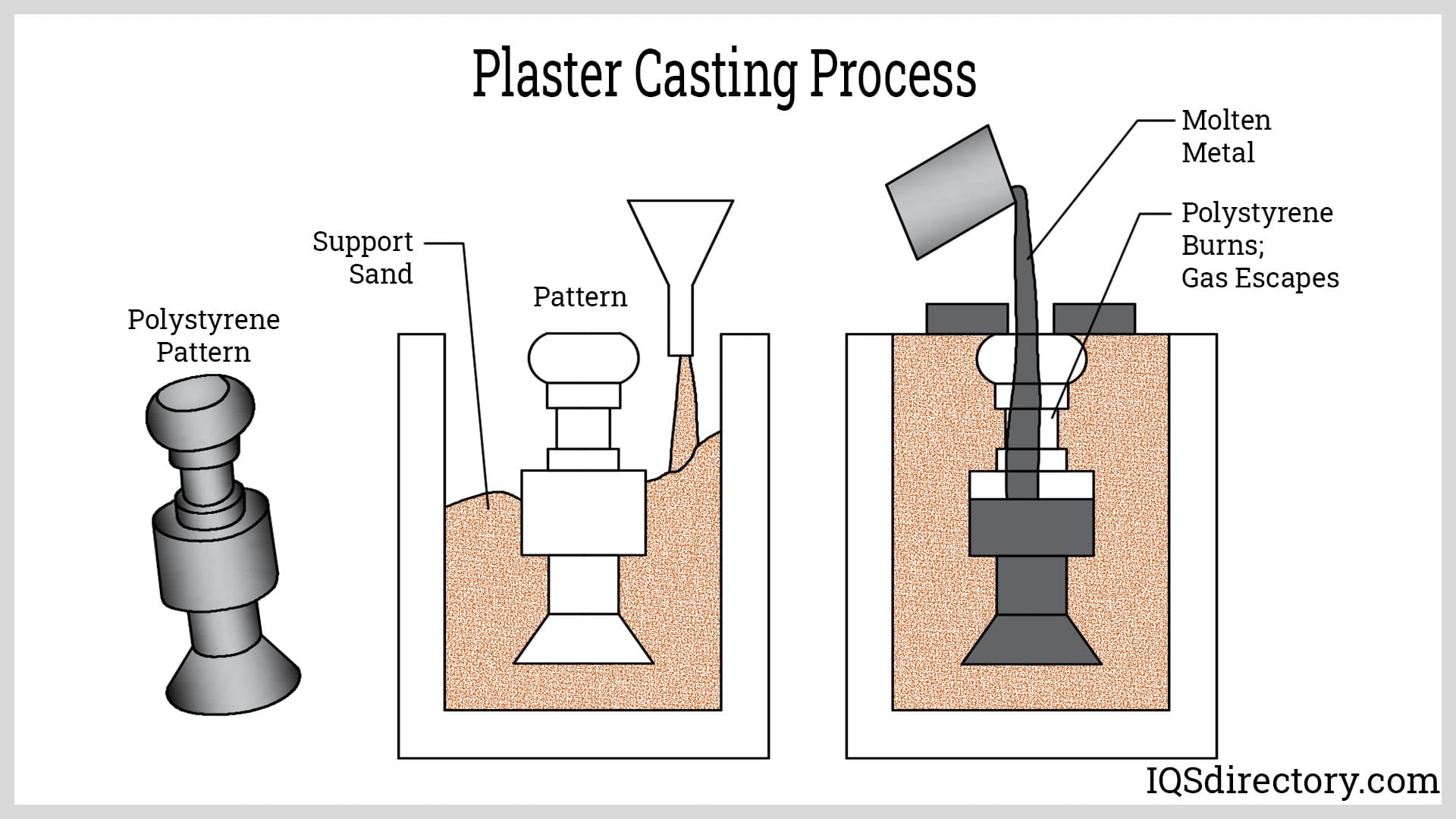Casting Criminal Minds - Shaping Understanding
Have you ever wondered what it truly takes to make sense of something incredibly intricate, like, say, the workings of a human mind that has gone astray? It's a fascinating area, one that asks us to look beyond the surface and truly grasp the inner mechanisms. This kind of deep observation is a bit like an art form, requiring a keen eye and a thoughtful approach to gather all the pieces.
When we talk about "casting" a criminal mind, we are not, in fact, talking about a stage play or a movie production. Instead, it's about forming a clear picture, a sort of mental mold, of how someone thinks and operates, especially when their actions step outside typical boundaries. It involves sifting through information, connecting seemingly unrelated dots, and, in a way, transforming raw data into a coherent narrative. You know, it's pretty much about understanding the whole person.
This process of building a profile, of truly "casting" a person's psychological makeup, shares some surprising similarities with how things are put together in other complex fields, like computer programming. Just as a programmer might "cast" a piece of information from one type to another to make it usable, those who study human behavior must often convert observations into a form that helps them grasp the underlying patterns. It’s a way of making sense of something that appears, at first glance, rather chaotic.
Table of Contents
- Understanding the Mind - What Does it Mean to "Cast" a Criminal Mind?
- The Subject of "Casting Criminal Minds" - A General Profile
- A Look at "Casting" in Tech - How Does it Relate to "Casting Criminal Minds"?
- Transforming Information - The Core of "Casting Criminal Minds"
- Why is it Important to "Cast" a Criminal Mind Effectively?
- The Process of Profiling - "Casting Criminal Minds" in Action
- Challenges in "Casting" - What Makes Understanding Difficult?
- Summary of Insights - Grasping the Nuances of "Casting Criminal Minds"
Understanding the Mind - What Does it Mean to "Cast" a Criminal Mind?
When we speak of "casting" a criminal mind, we are, in a way, referring to the careful work of shaping an impression or creating a distinct picture of an individual's thought processes and behavioral tendencies. It's about more than just labeling; it involves a deep process of observation and interpretation. This kind of work asks us to gather many different pieces of information, like puzzle pieces, and then put them together to form a complete image. For instance, you know, it's like someone might gather small bits of data about a person's past actions, their reactions to certain situations, and even the subtle ways they express themselves, all to build a comprehensive view.
This idea of "casting" is quite similar to how a sculptor might take a rough block of material and, with skill and patience, transform it into a recognizable form. The raw material, in our case, is the collection of behaviors, statements, and patterns that someone exhibits. The goal is to convert these raw observations into something meaningful and actionable. As a matter of fact, this transformation from raw data to a refined understanding is a core aspect of what we mean by "casting" a criminal mind. It's about moving from general impressions to a specific, detailed profile that offers insight into motivations and likely future actions.
Think about it this way: in the world of computer programming, as my text hints, you often have to "cast" a piece of data. Perhaps you have a number stored as text, and you need to convert it into an actual numerical value so you can perform calculations. That conversion, as it were, is a form of "casting." Similarly, when you're trying to understand a complex mind, you're taking raw, sometimes confusing, pieces of information – maybe a strange statement, a peculiar habit, or a pattern of actions – and you're "casting" them into a framework that makes sense. You're giving them a new "type," if you will, that allows for deeper analysis. This is, basically, how we start to make sense of what might otherwise seem like random occurrences.
The Subject of "Casting Criminal Minds" - A General Profile
When we talk about "casting" a criminal mind, we are, in essence, trying to build a comprehensive picture of an individual who exhibits behaviors that are outside the usual societal norms. This isn't about judging, but rather about understanding the patterns, motivations, and psychological makeup that drive certain actions. It's about creating a mental blueprint, so to speak, that helps us grasp the nuances of their thought processes. You know, it's a bit like assembling a detailed dossier on someone's inner world.
To help illustrate this, let's consider the general "profile" that emerges when someone undertakes the work of "casting" a criminal mind. This isn't a single person, but rather a compilation of characteristics that might be observed and then categorized, much like how different data types are handled in computing. The information gathered can be quite varied, from their early life experiences to their current habits. Apparently, every piece of information, no matter how small, can contribute to the overall picture being formed.
| Profile Aspect | Typical Observation in "Casting" |
| Behavioral Patterns | Repetitive actions, specific methods of operation, reactions to stress. |
| Motivational Factors | Underlying desires, perceived needs, emotional triggers. |
| Cognitive Style | How information is processed, decision-making approaches, problem-solving methods. |
| Interpersonal Dynamics | Relationships with others, social interactions, perceived social standing. |
| Emotional Regulation | Capacity for empathy, control over impulses, expression of feelings. |
| Environmental Influences | Impact of upbringing, social surroundings, significant life events. |
This table, in a way, provides a structured look at the kinds of elements that are considered when one attempts to "cast" a criminal mind. Each piece of information, much like a variable in a computer program, has its own "type" and contributes to the overall "object" or profile being created. It's pretty much about organizing disparate facts into a coherent, usable form.
A Look at "Casting" in Tech - How Does it Relate to "Casting Criminal Minds"?
The concept of "casting" isn't just for understanding people; it's a very common idea in the world of technology, particularly in programming. My text talks about how "Java allows us to cast variables of one type to another as long as the casting happens between compatible data types." This means you can, for example, treat a general "object" as a more specific "string" if it really is one. This idea of making something more specific, or converting it into a form that makes more sense for a particular use, is directly related to "casting criminal minds."
Consider what happens when you try to "cast" something in a way that isn't quite right. My text mentions, "Casting pointers is usually invalid in c,It's possible that, due to alignment considerations, the destination pointer type is not able to." This suggests that if the underlying structure isn't compatible, the "cast" won't work, or it will lead to errors. Similarly, when trying to "cast" a criminal mind, if you try to force a person's behaviors into a profile that simply doesn't fit, you won't get a true picture. You might, in fact, end up with a distorted or unusable understanding, which is really not helpful at all.
There are also different ways to "cast" in programming, like "static cast" versus "dynamic cast." My text points out that "Static cast is also used to cast pointers to related types, for example casting void* to the appropriate type,Dynamic cast is used to convert pointers and." This tells us that some conversions are more direct and checked at one stage, while others are checked later, during the actual running of the program. This variety of "casting" methods mirrors the different approaches one might take when "casting" a criminal mind. Sometimes, you have a pretty clear idea of what you're looking for, and you can make a more direct "cast." Other times, you need to be more flexible and allow for more checks as new information comes in, which is, honestly, a lot like dynamic casting.
Transforming Information - The Core of "Casting Criminal Minds"
At its heart, "casting criminal minds" is about transforming raw, often fragmented, pieces of information into a cohesive and useful understanding. My text touches on this when it notes, "Usually a new object is created,Copy and information might be." This means taking existing data and reshaping it, or making a new version of it, in a way that serves a specific purpose. When we gather details about a person's actions, their background, or their communication style, we are collecting raw data points. The "casting" process then involves converting these disparate pieces into a unified "object" – the profile of the mind.
This transformation isn't just a simple change; it often involves interpreting and giving new meaning to what's observed. My text mentions, "Casting in java isn't magic, it's you telling the compiler that an object of type a is actually of more specific type b, and thus gaining access to all the methods on b that you." This suggests that "casting" is an act of declaring intent, of saying, "I believe this general piece of information can be understood in a more specific way, allowing me to see deeper aspects." When "casting criminal minds," you are essentially telling yourself, or others, that these behaviors, which might seem random, actually belong to a specific pattern or psychological type, which then helps you gain access to a deeper comprehension of their motivations and thought processes. It's really about making the implicit explicit.
Sometimes, this transformation can be tricky, or even lead to unexpected results. My text mentions a scenario where "whenever i cast to my tv (as a wireless monitor), windows only casts picture, but not sound,The sound still goes through my." This is a perfect example of an incomplete "cast" – some information gets through, but other crucial parts are lost or simply don't transfer correctly. In "casting criminal minds," this could mean forming a profile that captures some aspects of a person's behavior but misses critical emotional or motivational elements, leading to an incomplete or misleading picture. So, too, it's almost as if you've only got half the story.
Why is it Important to "Cast" a Criminal Mind Effectively?
The ability to "cast" a criminal mind with accuracy carries significant weight, as it can influence many important outcomes. When you have a clear and accurate picture of someone's thinking and behavioral patterns, it helps in predicting future actions, understanding motives, and even developing strategies for intervention or prevention. This is pretty much about getting ahead of potential problems. Without this careful "casting," efforts to address complex situations might be misguided or simply ineffective.
Consider the alternative: if the "casting" is flawed, it's like trying to use a piece of data that hasn't been properly converted in a computer program. My text highlights that "Casting integer to double isn't possible at all,You seem to want to give java an object of one

Die Casting Process

Sand Casting - Weld2Cast

Types and Methods of Casting Processes